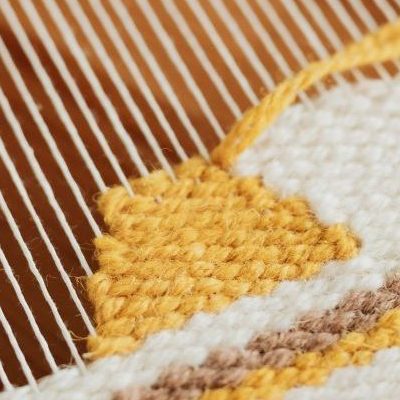By Shelbi Tedeschi
“I surprise myself in another way, too: I don’t worry about his safety with a babysitter. I worry about what the babysitter—still nameless, now, still a young woman yet to be invited into our house—will make of us.”
~“The Babysitter” by Anton DiSclafani (River Teeth 19.2, Spring 2018)
I’ll admit it—I’m a sucker for a good woven essay. Call it a braided or challah essay, give it two strands, give it four. I’m drawn to them, and when I read a good one, I find myself pulling the pieces apart, trying to master the art of it. It’s not something I tend to lean toward in my own writing. When I’ve experimented with writing braided essays in the past, I’ve often felt the parts were too disparate, and I struggled to find that all-important connection between the threads. A good braided essay takes a few sections—maybe a few different periods in one’s life for example—and weaves them together, back and forth, until the connections between the strands becomes clear. I love to read and admire a good braided essay. Anton DiSclafani’s “The Babysitter,” included in River Teeth 19.2, is an exceptionally instructive example of the form.
In this essay, DiSclafani weaves between the past and present of a mother in need of a sitter who used to be a babysitter herself. Of her years working as a babysitter, she writes, “As I enter adolescence, and then young adulthood, parents at parks sometimes assume I am a mother, not a babysitter . . . The assumption startles me—can’t they tell that this is not my child?—but I do not correct it” (53-54). She reaches back in time to reflect on her position then and to understand what may be going through the minds of the teenagers she interviews now. In exploring her own experience of caring for other women’s children, DiSclafani is able to relate to the candidates she’s interviewing.
DiSclafani begins the essay by describing her current life as a fearful mother, judging the teenagers she interviews to watch her son. As she continues, the sections holding the past and present draw physically closer together on the page. These two stages in her life blur together, and she sees herself differently as a mother employing a babysitter because of her experience as a babysitter. DiSclafani writes, “I try and remember what was required of me. No TV was an unspoken rule. When I babysat there were no smartphones. There were only blocky flip phones, used in case of emergency. It was only me, the child, the clock on the wall” (57). Because she had no distractions while caring for the children of various families in the past, she sets the same standard when she’s hiring someone to watch and care for her own baby. While she used to judge the mothers she worked for, she now sizes up the teen girls before her.
DiSclafani juxtaposes her teenage memories of caring for other people’s children with the anxiety of putting her own child in another’s care. Her past experiences also make her more aware of the impression she might be making on the babysitter. The reader sees these moments converge when, at the end of the essay, DiSclafani faces the caregiver she’s chosen for the first time: “The exchange astonishes me. As if all my hours and hours of minding other people’s children have led to this moment: I will open up my house, my home, to a stranger. Provide her with glimpses of our innermost lives. And then pay her. We will do this again and again, until it is time for her, or us, to move on” (60). Here, DiSclafani ties the strands of the braid together, as her past truly meets her present and looks it in the face.
While I valued the braided essay as a form, I specifically appreciate the way DiSclafani braids together her past and present experiences to allow for more reflection and discovery—the elements many of us value most in nonfiction. And that’s what I most want to model to writers who may use “The Babysitter” as inspiration—not simply the back-and-forth structure of a braided essay, but why we write braided essays, and the potential they can create for your subject matter. A braided essay is successful when it finds the connection between the strands and when it shows the reader what the purpose of weaving the strands together is. “The Babysitter” can serve as a brilliant example to writers looking for inspiration, as DiSclafani expertly weaves the strands of her essay back and forth until they are seamlessly intertwined and loop off in a way that feels as though it isn’t the end but the beginning of another chapter.
Exercise:
- Read the essay a second time. Ask yourself this question: how does DiSclafani use structure to open herself up to more reflection and to move between past and present versions of herself?
- Choose an experience in your life on which your viewpoint has evolved over time.
- Set a timer for 10 minutes, three times. In each round, write about the experience from a different viewpoint you’ve held over time.
- Now look at your three drafts, and play with how they might fit together. You can toy with organization, mixing the order of when each viewpoint appears. What’s the common connection? At what points do they intersect? And most importantly, what do they ultimately mean when pieced together?
Shelbi Tedeschi is a River Teeth intern and a graduate student at Ball State University. She is a writer of nonfiction, and her work has been published by Rathalla Review and Relief Journal.
**Check with your library to find out if you have an institutional subscription to ProjectMUSE, and thus, River Teeth’s archives.
Image courtesy of Pexels
















